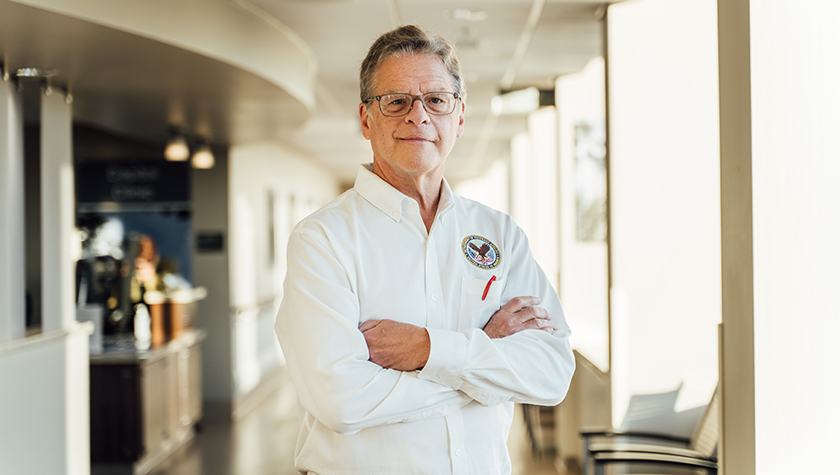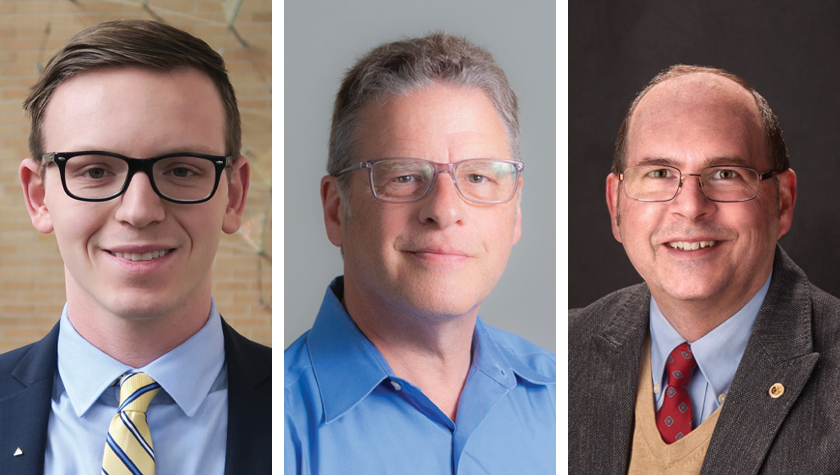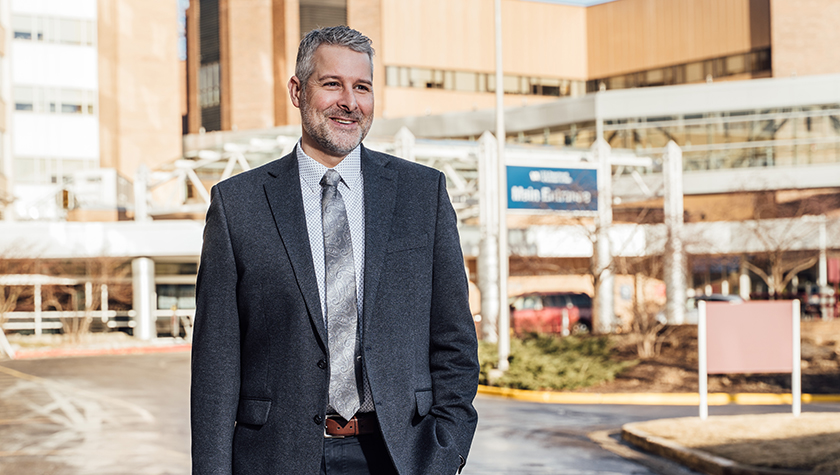
Professor Barry Gidal, a nationally recognized leader in epilepsy research, is driving progress in treatment and patient advocacy
By Nicole Sweeney Etter
For more than 30 years, Barry Gidal, professor of pharmacy practice at the University of Wisconsin–Madison School of Pharmacy, has been on a mission to eradicate epilepsy. His commitment has led him to become a major player in the epilepsy research field.
Most recently, Gidal was appointed to the Scientific Advisory Board of CURE Epilepsy — the leading nonprofit epilepsy research organization — was elected to the American Epilepsy Society’s Board of Directors, and began serving as an associate editor for the journal Epilepsia, the world’s leading epilepsy medical journal. He has also served on editorial boards of several other scientific journals, such as Epilepsy Research, Epilepsy & Behavior and Epilepsy & Behavior Reports, and is the medications co-editor for the Epilepsy Foundation’s Epilepsy.com.
For the last eight years, Gidal has also served on the board of the Epilepsy Foundation of Wisconsin — the principal epilepsy advocacy organization in the state.
“This is a horribly disabling disease,” says Gidal. “It impacts your ability to drive a car, to attend school, to have a job. Mortality is about threefold higher for those with epilepsy versus their peers of about the same age and sex. This is one of the most common neurologic diseases, but it doesn’t get talked about a lot.”
“You really have to be interested in hearing the stories from patients. It’s putting the whole patient story together and going on that journey with them.”
—Barry Gidal
Epilepsy affects an estimated 2% of the population in North America, but that could be an underestimate, Gidal notes.
“A lot of patients out there have ‘funny spells’ that get misdiagnosed, or they never talk to their doctor about it,” he says. “We also know as our population is aging, the incidence of epilepsy goes up.”
A chance connection during Gidal’s residency training led him to epilepsy research, and he soon discovered it was a field ripe for exploration.
“Unlike a lot of areas of medicine, there are not a lot of good straightforward algorithms,” he says. “We don’t have a single measurement that we can use to make a decision. What that means is you really have to be interested in hearing the stories from patients. It’s putting the whole patient story together and going on that journey with them.”
Staying connected to patient care
Gidal gets to take that journey weekly.
“If you ask me what is one of the most rewarding parts of what I do, I would say it’s my Monday mornings,” he says. “That’s when I have my epilepsy clinic.”

On top of his work as an educator and researcher at the School, Gidal works as a clinical pharmacist practitioner at the Epilepsy Center of Excellence at William S. Middleton Veterans Memorial Hospital in Madison, Wisconsin, where he sees patients to manage antiseizure medications, order diagnostic tests, conduct mental health assessments, and more.
For Gidal, who started his career as a pharmacist in a critical care unit, the long-term patient relationships are the best part.
“I have patients for whom I’ve been one of their primary epilepsy providers for almost three decades,” he says. “I’ve had patients who now have grown kids, and they were just starting to have children when I first started to see them. I’ve learned that I really like that longitudinal experience, where I get to know these people over many, many years, and you go through the ups and downs with them.”
Epilepsy can be challenging to treat. What resolves one patient’s symptoms might do nothing for another patient.
“One of the reasons why I like this field so much is there’s a lot of art that goes along with the science,” he says. “So we do a lot of combination therapies, putting things together that work a little bit differently, and hopefully we find the right formula, if you will, for an individual patient.”
The search for better treatments
Gidal’s experience as a clinician also gives him valuable insights that inform his research.
“I’ve always felt that the most interesting questions come from the clinic,” he says.
His research has focused on the pharmacotherapy of epilepsy and antiseizure medications. Despite the exponential growth in new anti-seizure medications over the past few decades, about one third of patients still struggle to achieve seizure control. Not only does that affect patients’ quality of life, but every seizure inflicts damage to the brain, and the effect is cumulative.

“Our goal is no seizures, no adverse effects. In many patients, unfortunately, neither is completely possible,” Gidal says. “Much of what we do is management of these sometimes complex drug regimens in order to make what could be intolerable adverse effects either go away, or at least become more tolerable.”
But Gidal isn’t giving up. He continues to study drug interactions, particularly with newer anti-seizure medications, which could significantly impact patient outcomes.
Gidal has also researched cannabidiol (CBD) as a treatment option for epilepsy, which led to a study that found that only 15% of CBD products are correctly labeled. More recently, he co-authored guidelines for using Epidiolex, the only FDA-approved prescription CBD product, to treat seizures associated with Lennox–Gastaut syndrome, Dravet syndrome, and tuberous sclerosis complex.
Because of Gidal’s roles in leading epilepsy organizations and journals, he has a front-row seat as new areas of epilepsy research develop. Although it is outside his area of study, he is particularly excited about research on the underlying neurobiology and genetics that drive seizure disorders, which could lead to more personalized and effective treatments.
While Gidal’s own research accomplishments are noteworthy, he is most proud of helping his patients overcome epilepsy with successful medication management.
“It doesn’t always happen, but when you can score a win, that’s great,” he says. “That is truly when I know that I made a difference.”

